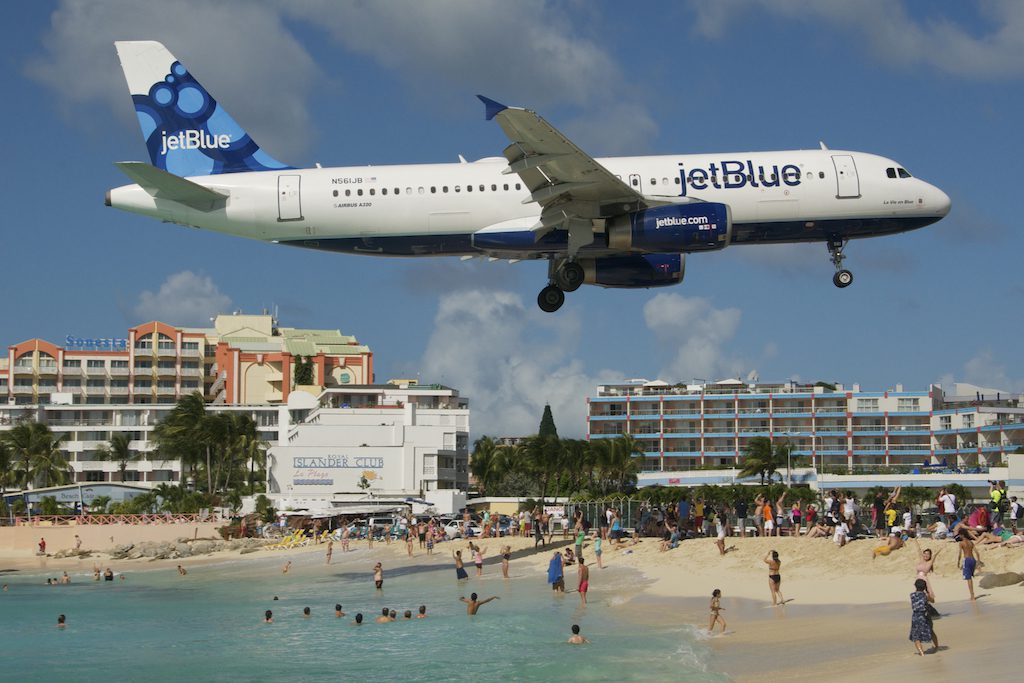Skift Take
JetBlue echoed the industry refrain that business flyers could return to the skies after a bumper summer leisure travel season. But the optimism hid a lack of details on its long-awaited London launch and a return to profitability without government relief.
The summer travel season is not even upon us yet but JetBlue Airways is already looking forward to the next phase of the recovery.
The New York-based carrier hopes to see workers beginning to return to offices and, more importantly, flying again on business trips this fall. This would follow what is expected to be a relatively busy period for leisure travel this summer, when some analysts warn that fares could reach — or even exceed — 2019 levels during peak periods. A September uptick in corporate travelers could segue nicely from the leisure recovery this summer to the business one this fall, with suits possibly replacing sandals on planes after Labor Day.
“We’re cautiously optimistic that — assuming there isn’t any increase in travel restrictions, that the vaccine continues to take a hold, [and] that case counts stabilize or come down — the fall has the potential to be good for JetBlue,” JetBlue President Joanna Geraghty said during the airline’s first quarter earnings call on Tuesday.
JetBlue is not alone. Alaska Airlines, American Airlines, Delta Air Lines, Southwest Airlines and United Airlines all see some level of business travel returning as summer switches to fall. While no one expects a full recovery — JetBlue executives were quick to note that any recovery would be off a “very low base” — Seattle-based Alaska thinks as much as half of its 2019 corporate travelers could be flying again by year end.
The latest forecast from trade group Airlines for America (A4A) has domestic air travel volumes recovering to 2019 levels by 2023. Globally, the recovery is expected to stretch into at least 2024.
Caribbean Strength
“We’re in the midst of a leisure-first recovery,” said Scott Laurence, head of revenue and planning at JetBlue, during the call. “We’re built for leisure.”
No where is that truer than to the Caribbean and Latin America, which are mainstays of the airline’s map. Despite some headwinds from testing rules implemented by the U.S. earlier this year, demand to the region has recovered and — barring a change in the trajectory of the pandemic — capacity could exceed 2019 levels in July and August, said Laurence.
JetBlue anticipates system capacity of down roughly 15 percent compared to 2019 in the second quarter, executives said Tuesday. At the same time, 10 of its 269 aircraft-strong fleet of Airbus and Embraer jets will remain in storage.
For just the Caribbean and Latin America, capacity is scheduled to increase as much as 1.7 percent compared to two years ago during the April-to-June period, according to Cirium schedules. The growth follows the additions of Georgetown, Guyana; Guatemala City; and Los Cabos, Mexico to its map since the beginning of the pandemic.
Of course, not all of JetBlue’s route experiments have worked. Markets where strict travel restrictions remain have underperformed others, adding that flights there have been duly parred back, said Geraghty.
“We are optimistic about the coming summer months,” she said echoing the general sentiment of U.S. airline executives.
JetBlue saw a “step up” in bookings in mid-February, with improvements continuing apace, said Geraghty. In addition, JetBlue is firmly in the camp of wanting to boost fares — raise yields in airline speak — this summer as more people book flights.
Executives shed no new light on the carrier’s long-planned London launch. All that CEO Robin Hayes would part with was that JetBlue remains on track to begin flights by the end of the summer. No mention of airports — though Heathrow appears likely — or even the potential U.S.-UK travel corridor.
The carrier does anticipate taking a key step towards London with the arrival of its first two Airbus A321LRs by June. The long-range jets — at least compared to JetBlue’s existing fleet — are purpose-bought for the water jump to the British Isles.
Similarly unmentioned during the call was the Department of Justice investigation into its new Northeast Alliance with American. Executives repeatedly touted “growth” and new “competition” in Boston and New York — two concerns raised by objectors to the alliance — when asked about the partnership during the call. .
And The Numbers
JetBlue posted a net loss before taxes of $347 million in the first quarter, or $247 million after a tax benefit. However, without federal payroll support relief the airline would was much deeper in the red with a $636 million loss. Revenues fell nearly 61 percent to $733 million on a nearly 43 percent drop in costs to $1.03 billion both compared to 2019.
Critically for its financial recovery, the carrier stopped burning cash and generated breakeven cash from operations in March. A trend seen at several other carriers, including Alaska and United.
JetBlue expects revenues to recover to down 30-35 percent compared to 2019 in the second quarter — an at least 26 point improvement from the first quarter — said Geraghty. She and other executives declined to say when the airline might return to profitability.
“We are optimistic that 2022 has the potential to be a strong recovery year,” said Geraghty when asked about JetBlue’s financial rebound. She gave the hint that, even with a leisure rebound this summer and return of suits this fall, profitability could still be a year or more off for the airline.
The Daily Newsletter
Our daily coverage of the global travel industry. Written by editors and analysts from across Skift’s brands.
Have a confidential tip for Skift? Get in touch
Tags: business travel, coronavirus recovery, jetblue airways
Photo credit: JetBlue hops to swap leisure flyers for more lucrative business travelers after Labor Day. Aero Icarus / Flickr
